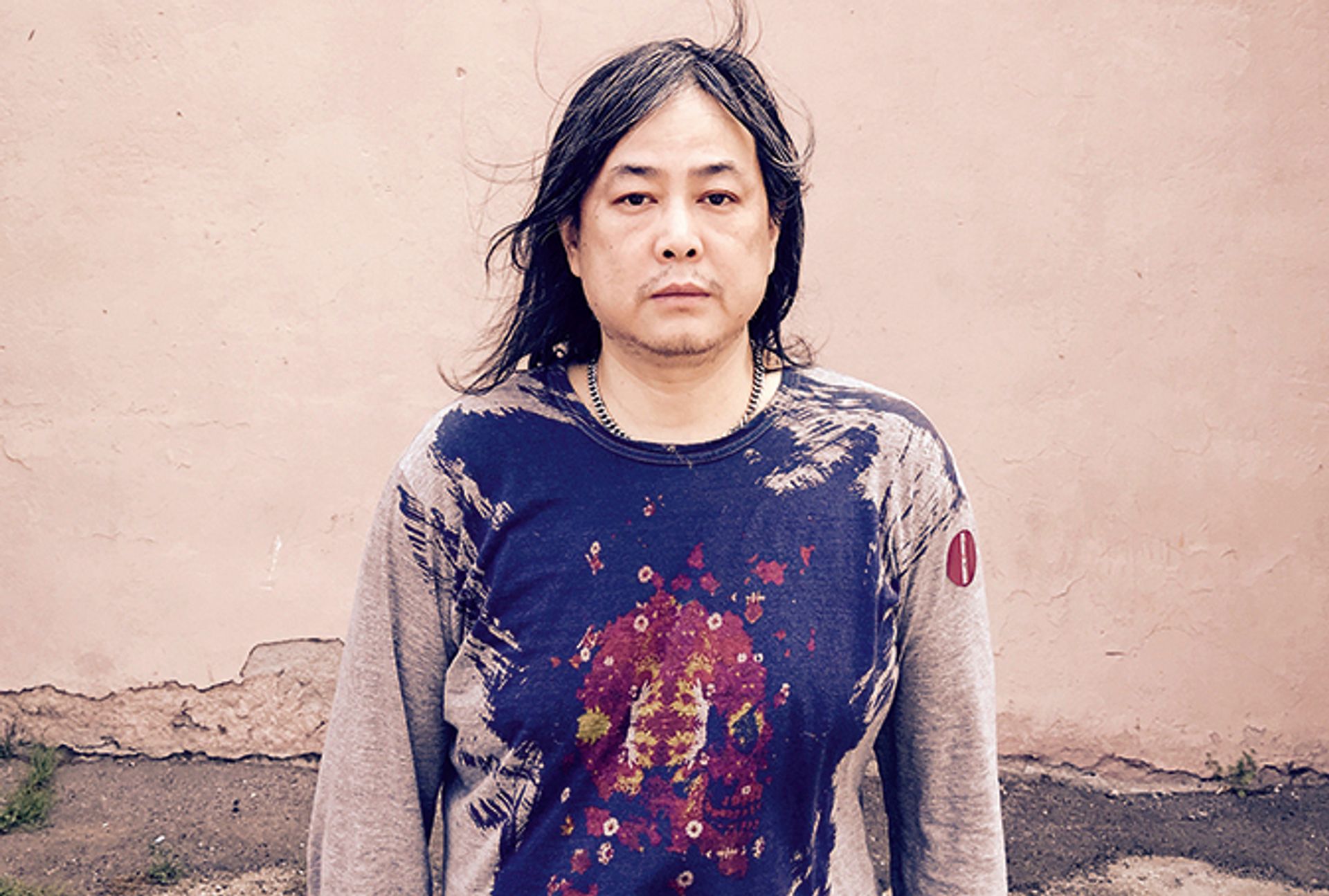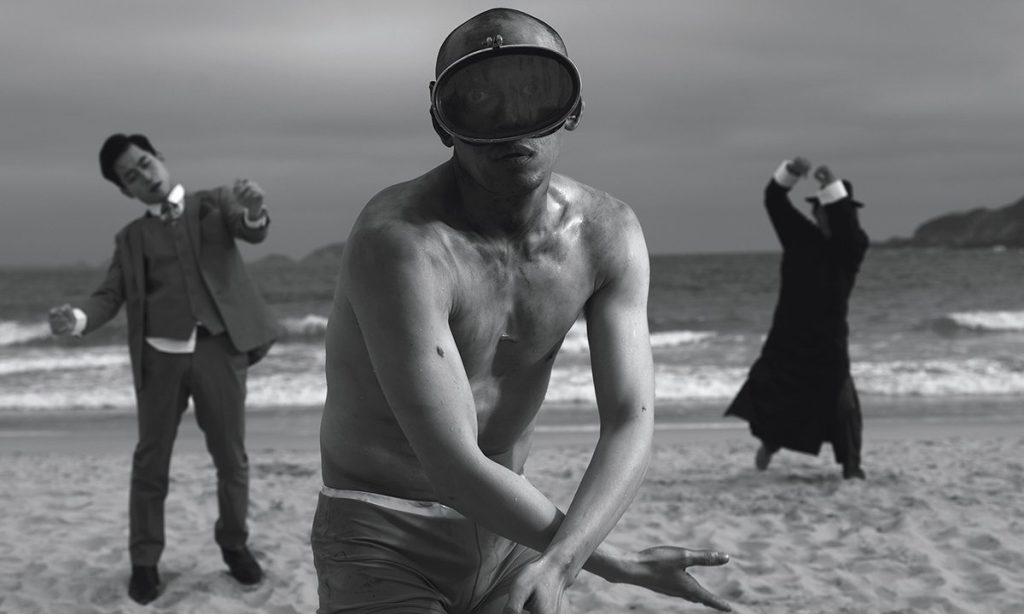Now, Yang Fudong’s new film will be screened on the 110 m wide facade of the M+ museum every evening until June. Sparrow in the Sea He depicts Hongkongers as “brave little birds” among the city’s pockets of urban beauty and unexpected serenity. Starting last September, Yang and his team spent nine days filming in locations in Hong Kong that were new to the Shanghai artist, such as local beaches and old towns. The artist’s first site-specific urban project was commissioned by M+ and Art Basel, with support from UBS.

Shanghai-based artist Yang Fudong Courtesy of the artist
Yang’s films and photographs capture the rapidly changing Chinese society through a lens of empathetic alienation, with a distinctive, ethereal style that conveys a sense of time being suspended. Born in Beijing in 1971, he studied painting at the China Academy of Art in Hangzhou, but soon began experimenting with film, a medium he describes as “painting with a camera”. At the vanguard of a generation of Chinese artists embracing the video and installation art of the 1990s, Yang has exhibited nationally and internationally, including at the Venice Biennale in 2003 and 2007, and the Sharjah Biennale in 2013.
The Art Newspaper: What it is Sparrow in the Sea about?
Yang Fudong: I visited Hong Kong to shoot this 60-minute black-and-white film. Yongqiu Chinese, English Sparrow in the Sea. The sparrow refers to an ancient text about a small bird by a river. People who live in their cities, by the sea, are like this bird. Sparrows are very small and it is dangerous to fly over the sea; they can get tired. So they must have courage to fly.
Another concept has to do with my age. As a person and an artist, he is slowly maturing and aging. So the concept is a little over 50 years. China says 50 is the midpoint of life: as you get older, your understanding of life, art, time, everything changes. You have to rethink how art is created and lived.
How do you expect the audience to experience the film?
It’s a silent film, with Hong Kong itself as the soundtrack. As you watch, you may hear ships or the sound of the sea, or storms, or people talking around you. A silent film allows for meaningful shared creation and will run for three months, so what the audience hears and experiences will be different. Maybe one day you’ll see a part on the Star Ferry to Kowloon, and then a week later another part from another part of the city. It is also different when seen at night than during the day. Most of the audience will see it in bits and pieces, outside, and I have said that the audience is the second director, how they choose the film or how they see it. People will watch for minutes or hours; it belongs to him.

Still from Yang Fudong’s new film Sparrow in the Sea (2024) © Yang Fudong
“Architecture” has been described as a movie. What does that mean?
The architectural element starts projecting on the M+ Façade and then the soundtrack takes over the urban soundscape, so the film becomes part of the skyline. I want the people watching, be they residents or tourists, to take away a kind of internal architecture, to have a different feeling, an internal consideration. The size of the screen was less of a problem than having a building, which made me think about psychological architecture. At night, across the water, it is like a lighthouse.
What is the story?
There are three actors [Yang Hao, Ma Choi Wo and Terry Tsang], all prominent Hong Kong independent dancers. They play a character, Mr Wu, who is now 50 years old. He has a suitcase, which suggests that he wants to go abroad like that little bird, somewhere far away, but it is not clear whether he will or not. The film covers the decades of his life, from youth to adulthood, as well as his abstract inner processes.
Most of the audience will see it in bits and pieces, outside, and I said the audience is the second director
What was the process of making the film like?
After going to Hong Kong to shoot a few times, I started to understand the place better. I wasn’t there much before, just a few days to open. Starting to live together with the city, I realized how beautiful this place is. It has very new and very old architecture. There are towns, mountains, the sea, and yet it is very international. I wanted to film his slow life. Hong Kong can be very quiet, like at night, when it’s a different city. You really have to enter the place: every street and neighborhood has something new.
During my time at university, I was very influenced by Hong Kong cinema and music. Wong Kar-wai and even [Jeffrey Lau’s fantasy] Dahua Xiyou and [action thriller] Matters of Hell. It is a unique Hong Kong film with its own style that made an impression on the youth back then. Although it was commercial, the artists learned [these films] and they liked them. I hope that Hong Kong will be what it once was: a crucial place for international dialogue.
• Yang Fudong: sparrow in the sea, M+ Facade, M+, West Kowloon Cultural District, 38 Museum Drive, Kowloon, Hong Kong, until June 9


